XML I10-003 XML Master Professional Database Administrator Exam Practice Test
A certain store engages in Internet commerce, managing customer information via XMLDB. Customers register as a user through a webpage, and are allowed to view their own information so they can edit their information themselves through a webpage interface. The store's Web application saves the customer information in an XMLDB, and retrieves data from the XMLDB as necessary. The XML data including customer information is as shown in [CUSTOMER.xml] referenced in a separate window.
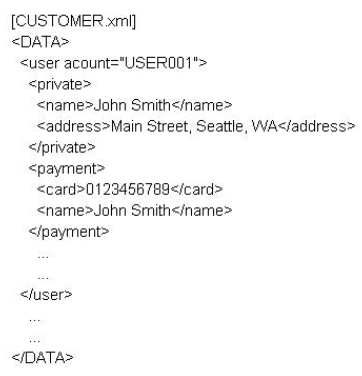
The XMLDB account when the Web application connects to the XMLDB is WEBAPP.
A person at the store is in charge of processing payments (access to all registered customer information), and this person's XMLDB account is COUNTER.
A person at the store is in charge of product shipments (access to all registered customer information except for payment information ("payment element")), and this person's XMLDB account is SHIPPER.
Do not consider XMLDB accounts other than those noted above.
Each account authorization in the XMLDB is presently configured as follows: The WEBAPP account has permission to update and view [CUSTOMER xml]
Other accounts have permission to view [CUSTOMER.xml]
Which is the most appropriate method in this situation regarding XMLDB account authorizations'?
Assume that this XMLDB has a view creation function (function to show only certain XML data in response to a certain query)
Answer : D
See separate window.
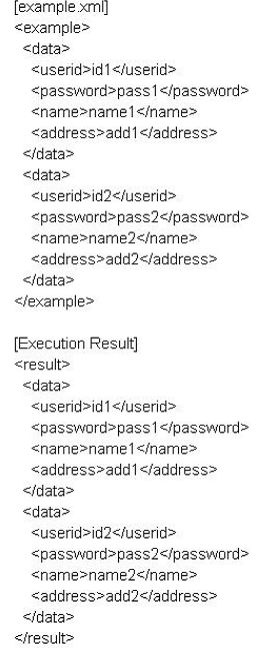
A certain Web application displays user information according to user input via Web browser. The XML data managing user information is as shown in [example.xml] (separate window). The following [XQuery] is executed when the Web application retrieves user information from [example xml].
[XQuery]
fn:doc("example.xml")//data[userid = "(1)"][password = "(2)"]
}
At this time, the Web application completes the [XQuery] by replacing (1) and (2) with the user input character string, and executes the query.
No character escapes (e.g. convert "<" to "<") are performed for character string input by the user. Select two of the following that produces the query execution result in [Execution Result] (separate window) when the character string is as shown in each answer choice.
Answer : B, F
Select the correct result of executing the following [XQuery] on [example xml] referenced in a separate window.
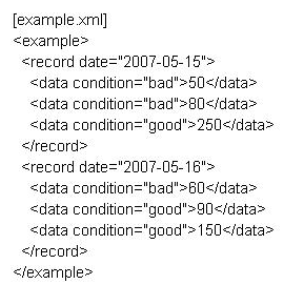
[XQuery]
for $record in fn:doc("example.xml")/example/record
return
}
Answer : D
Select the correct result of executing the [XOuery] on [example xml] referenced in a separate window.
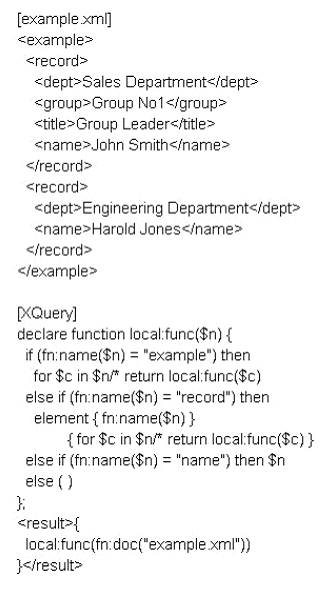
Answer : A
See separate window.
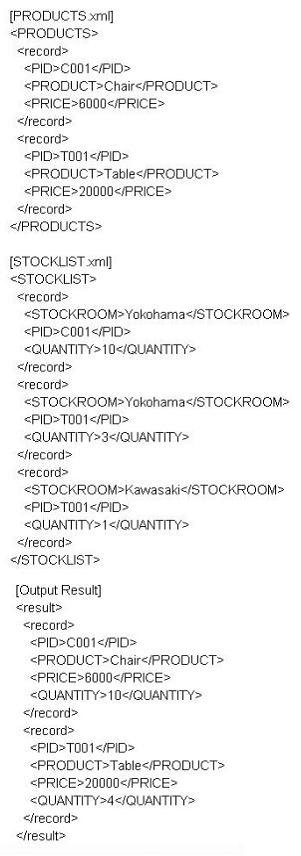
[PRODUCTS xml] (separate window) and [STOCKLIST.xml] (separate window) are output in XML format from RDB (relational database) data.
Assume that you wish to use an XOuery processor to get [Output Result] (separate window) from this XML data.
Which of the following is an XOuery that cannot retrieve [Output Result]?
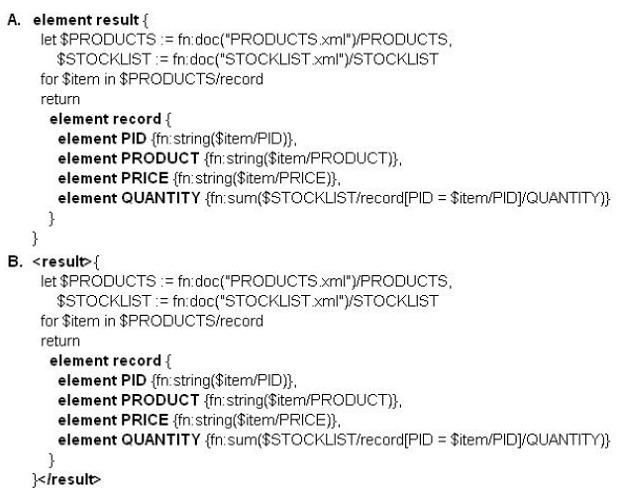
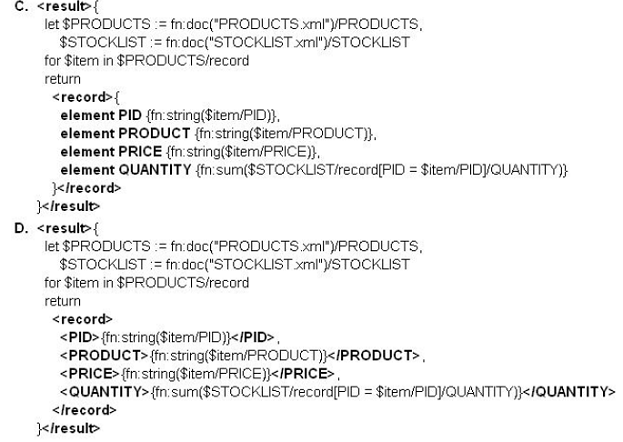
Answer : D
See separate window.
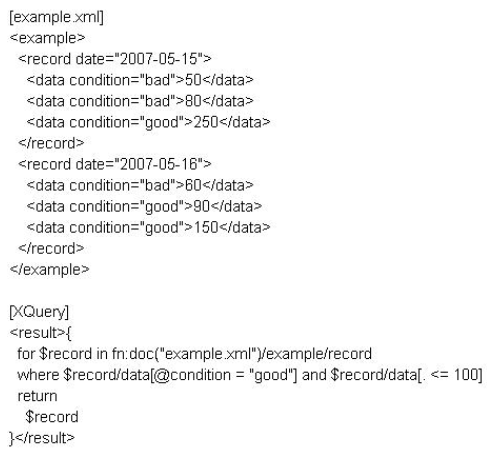
Assume you wish to execute a query on [example xml] (separate window) to obtain a record element that includes a data element for which the condition attribute value is "good," and for which the element value is 100 or less. Select the correct result of executing the [XQuery] (separate window). The expected result would be "C;" however, the query may not be processed as expected.
Answer : D
Consider the execution of [XQuery] as referenced in a separate window.
Assume that the following index is used when executing this [XQuery] on a certain XMLDB.
[Index Usage Standards] (assumed)
Use only the most efficient index when an index for both $A/@type and $B/@type is created.
If only one index is created, use that index.
Do not use an index if none is created.
Assume the following circumstances regarding the statistical values related to the execution of this [XQuery].
[Statistical Value] (assumed)
When creating an index for $A/@type, the response time when updating $A/@type data is one millisecond longeron average.
When creating an index for $B/@type. the response time when updating $B/@type data is one millisecond longeron average.
When creating an index for either $A/@type or$B/@type, or when creating an index for both, the response time of [XQuery] execution is at least two milliseconds shorter on average.
Of all of the values of $A/@type, the rate of inclusion of identical values is 1% on average. Of all of the values of $B/@type, the rate of inclusion of identical values is 2% on average. The ratio of $A/@type data update, $B/@type data update, and [XQuery] execution is 1:1:1 on average.
When the number of data items for both $A/@type and $B/@type are extremely large and almost identical, which is the most effective method for improving overall execution efficiency? Assume that this XMLDB has no other automated optimization functions than those described above. Assume that no other queries are executed.

Answer : B